

A Guide To The Best Fonts For a Cover Letter (With Examples)

Written by Mark DeGrasso
May 3, 2023.
When it comes to your job search, every detail counts, including the font you choose for your cover letter. While you may think that the content of your letter is the most important thing, the font you use can make a significant impact on the reader’s perception of you. In this article, we will guide you through the process of selecting the best font for your cover letter, giving you the edge you need to stand out from the crowd.
Tips On Choosing the Perfect Font For Your Cover Letter
Choosing the right font for your cover letter is an important step in creating a professional and polished impression on potential employers. While it may seem overwhelming to choose from the vast array of options available, there are some key considerations to keep in mind that can help make the decision easier.
First and foremost, it is important to stick to professional fonts that are widely recognized and easy to read. Arial, Helvetica, and Times New Roman are all excellent choices that are commonly used in business settings. These fonts are straightforward and legible, making them a safe bet for any cover letter.
Another important factor to consider is the legibility of your chosen font in small sizes. While you may be tempted to choose a more decorative or unique font to stand out, it is important to remember that your cover letter may be viewed on a variety of devices and printouts. Choosing a font that is easily readable in small sizes can help ensure that your letter is accessible to all potential employers.
It is also important to avoid fonts that may be difficult to read or give off an unprofessional impression. Decorative or cursive fonts, while visually interesting, can be challenging to decipher and may not be appropriate for a professional cover letter.
When considering your font choice, it can also be helpful to think about the company you are applying to and their brand. Do they have a particular font that they use in their materials? If so, using that font in your cover letter can help demonstrate that you are a good fit for the company and its values.
Finally, it is always a good idea to test your font choice by printing a copy of your letter and reviewing it for legibility and readability. This can help ensure that your cover letter is polished and professional, and that you are presenting yourself in the best possible light to potential employers.
The Top Ten Fonts For Your Cover Letter and Why
When it comes to creating a cover letter, choosing the right font can make all the difference. While there are countless fonts to choose from, some are more conducive to a professional cover letter than others. Here are the top ten fonts to consider:
- Arial – This clean, sans-serif font is a standard in the business world. It is easy to read, widely recognized, and can be used in various sizes. Arial is a safe choice that can work well for any industry.
- Helvetica – Similar to Arial, this versatile font has a classic look and is easy to read in small and large sizes. It is a popular choice in the design industry and can work well for creative roles.
- Times New Roman – This serif font is an excellent choice for a traditional industry, such as law or academia. It is easy to read and adds a touch of professionalism. Times New Roman has been a popular choice for many years and is a safe bet for any conservative industry.
- Calibri – Another sans-serif font that is easy to read, Calibri has been widely used since its debut in Microsoft Office in 2007. It has a modern look and is a good choice for industries that value innovation and creativity.
- Garamond – This serif font has been around for centuries and is known for its timeless elegance. It is an excellent choice for creative fields or those where a classic touch is desired. Garamond is a great choice for industries such as art, fashion, or luxury goods.
- Georgia – Similar to Garamond, Georgia is a classic serif font that is easy to read and has a timeless feel. It is particularly suited to fields such as journalism or publishing, where a traditional look is valued.
- Verdana – This simple sans-serif font is an excellent choice for electronic communication as it is easy to read on-screen. It has a modern look and is a good choice for industries that value simplicity and ease of use.
- Baskerville – This elegant serif font is another excellent choice for traditional industries. It is classy and easy to read in small sizes. Baskerville is a great choice for industries such as finance , law, or government.
- Trebuchet MS – A sans-serif font that is easy on the eyes, Trebuchet MS is a good choice for a sleek look. It has a modern feel and can work well for industries such as marketing or advertising.
- Century Gothic – This elegant sans-serif font is an excellent choice for those looking for a modern, sophisticated look. It has a unique look that can make your cover letter stand out. Century Gothic is a great choice for industries such as technology or design.
Remember, the font you choose for your cover letter should reflect your personality and the industry you are applying to. While these top ten fonts are a great starting point, be sure to choose a font that is easy to read and professional.
Additionally, it’s important to keep in mind that the font is just one aspect of your cover letter. The content and formatting are equally important in making a strong impression on potential employers. Be sure to proofread your cover letter carefully and tailor it to the specific job you are applying for.
Using the Right Font Can Make or Break Your Cover Letter
Your cover letter is your chance to make a great first impression with a potential employer. It’s important to remember that the font you choose can have a big impact on how your letter is perceived. While the content of your letter is essential, the font you use can make a difference in how you are perceived.
When it comes to choosing a font for your cover letter, it’s important to consider the industry and company culture. For example, if you’re applying for a job in a creative field, you may want to consider using a more playful or unique font. However, if you’re applying for a job in a more traditional industry, such as finance or law, you may want to stick with a more classic and professional font.
Another thing to consider when choosing a font for your cover letter is readability. You want to make sure that your letter is easy to read and that the font you choose is not too small or too difficult to read. A font that is difficult to read or unprofessional can make a negative impression on the reader.
One popular font choice for cover letters is Times New Roman. This font is classic and professional, making it a great choice for traditional industries. Other popular font choices include Arial, Calibri, and Helvetica.
Ultimately, the font you choose for your cover letter should be based on what is appropriate for your field, the company culture, and the application process. Take the time to choose the best font for your cover letter, and you will increase your chances of making a great first impression.
Table of Contents
Best Fonts to Use On Your Cover Letter
In This Guide:
Eye-pleasing fonts, get to writing.

Recruiters and human resource specialists look for reasons to keep or throw away cover letters from the second they see them. Your writing style and content of your letter may be the most important factors of whether you make it to the next round or not, but do not overlook the importance of appearance.
You can have the best-crafted cover letter that truly sets you apart from your peers, but if you write it in Comic Sans, someone will likely toss it in the trash before being read. In this article, you’ll learn about some of the best fonts for cover letters.
Upload & Check Your Resume
Drop your resume here or choose a file . PDF & DOCX only. Max 2MB file size.
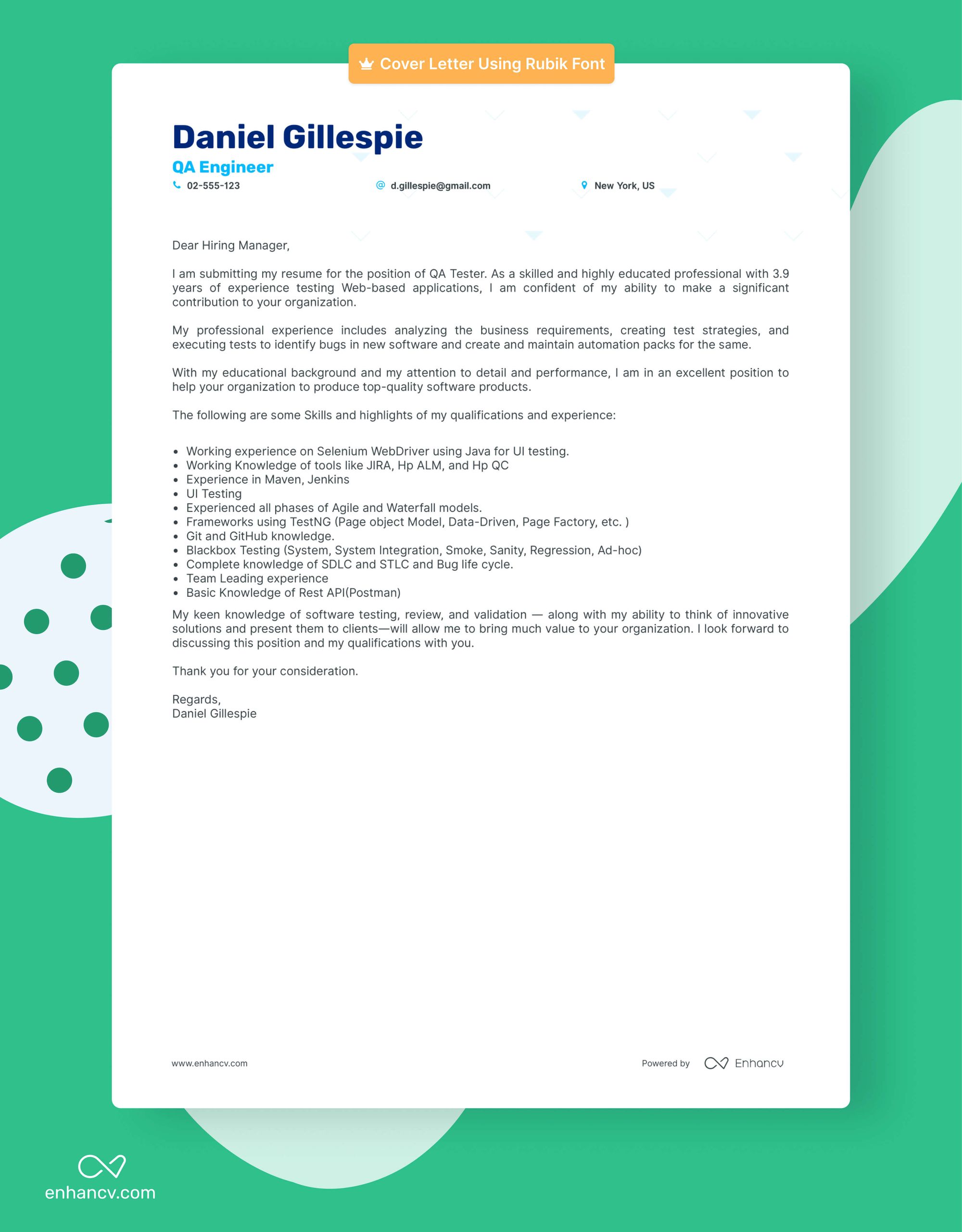
There is no single best font for your cover letter, but you cannot go wrong with the options listed below. Whether you are looking for something classic, safe, or professional while still being fun, you will find something that works for you.
Arial is a sans serif font, meaning without strokes at the ends of letters, and is always a safe choice. This classic font is clean and easy to read, making it the standard choice for most business uses — including cover letters. Arial is also a standard sans serif choice for many commonly used applications such as Microsoft Word and Google Docs.
Times new roman
Times New Roman was the standard font for printed work before documents, including cover letters, were primarily read on computer screens and tablets. This is one of the best fonts for cover letters due to it being a serif font, meaning letters have strokes that help make them easier to identify and read.
Calibri has served as Microsoft’s default serif font for nearly 15 years from its creation to today. The software giant is in the process of moving on to new options, but Calibri is still a popular and safe choice for your cover letter. The design consists of more defined lines and curves for lettering, which increases readability.
Lato is one of the best fonts for cover letters for job seekers who want to be professional but add some style. This sans serif font comes in a variety of typefaces from thin to ultra-bold. This modern font was created by Polish designer Łukasz Dziedzic in 2010.
Exo 2 is a redesigned geometric sans serif font created by Portuguese designer Natanael Gama while he was doodling glyphs. This contemporary font grabs attention in the right way while still maintaining professionality. Exo 2 would be one of the best fonts for a cover letter for anyone applying for a creative or non-corporate position.
Helvetica is a classic font that has been a favorite of the business and art worlds since the 1950s. This sans it specifically designed serif font to be neutral, making it one of the best fonts for cover letters as it will not distract the reader from what you have written.
You cannot go wrong with any of the choices mentioned here. Some fonts like Arial and Times New Roman are used more than others, but all are safe options that will not turn an evaluator off from your cover letter on sight. So check them out, make your choice, and write that cover letter!

- Cover Letter Guides
How To Include P&L Responsibility on Your Resume
Myers-briggs cheat sheet: expert advice on the best careers based on personality, bulgaria: a cv to make you proud, how many bullet points should i have per job on a resume, the best jobs in the metaverse, how to write an effective personal resume.
- Create Resume
- Terms of Service
- Privacy Policy
- Cookie Preferences
- Resume Examples
- Resume Templates
- AI Resume Builder
- Resume Summary Generator
- Resume Formats
- Resume Checker
- Resume Skills
- How to Write a Resume
- Modern Resume Templates
- Simple Resume Templates
- Cover Letter Builder
- Cover Letter Examples
- Cover Letter Templates
- Cover Letter Formats
- How to Write a Cover Letter
- Resume Guides
- Job Interview Guides
- Job Interview Questions
- Career Resources
- Meet our customers
- Career resources
- English (UK)
- French (FR)
- German (DE)
- Spanish (ES)
- Swedish (SE)
© 2024 . All rights reserved.
Made with love by people who care.
- Preparation Tips
- Interview Checklist
- Questions&Answers
- Difficult Questions
- Questions to Ask
Interview Tips
- Dress for Success
- Job Interview Advice
- Behavioral Interview
- Entry Level Interview
- Information Interview
- Panel Interviews
- Group Interviews
- Phone Interviews
- Skype Interviews
- Second Interviews
- Zoom Interviews
- Job Interview Guides
- Administrative
- Call Center
- Clerical Interview
- Customer Service
- Human Resources
- Office Manager
- Project Manager
- Restaurant Jobs
- Social Work
- Interview Follow Up
- Thank You Letters
- Job References
- Employment Tests
- Background Checks
- Character References
- Accepting a Job Offer
- Decline a Job Offer
- Verbal Job Offer
- Negotiate Salary
- How to Resign
- Job Search Strategy
- Job Search Tips
- Respond to Interview Request
- Letters of Recommendation
- Surviving a Layoff
- Sample Resumes
- Resume Objectives
Cover Letters
Job Descriptions
- Job Interview Blog
- Best Articles
Privacy Policy
Best Font for Cover Letter
The best font for cover letter purposes is one that is clear and easy to read. Hiring managers will quickly pass over a cover letter that isn't instantly legible. Keep your cover letter font professional, simple and consistent with your resume font.
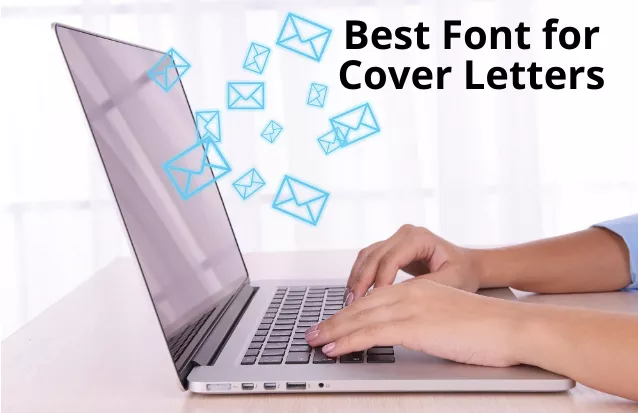
An important consideration is the fact that your cover letter may be viewed on a desktop, laptop or mobile device so stick to a universal font that renders well on all screens.
5 Best Font for Cover Letter Styles
Hiring managers and recruiters largely agree on these being the 5 best font for cover letter styles.
Helvetica is a modern favorite that works well for all cover letters. It only comes preloaded on Apple computers so Arial is an excellent alternative if you don't have a Mac.
Arial is the standard font for Google Docs and Microsoft Word, meaning that it will display accurately on all computers. It renders well on all screen sizes and its crisp lines make it clear and simple to read.
It is sometimes considered too familiar and bland for jobs in creative and trendy companies and a more contemporary font may be better suited for these type of cover letters
2. Times New Roman
Times New Roman is a popular and traditional font that presents as classic and professional. It is a good cover letter font to use when you want to convey a serious and formal approach. An appropriate choice for jobs in traditional and conservative industries.
3. Trebuchet MS
A less used, modern and clean cover letter font with an energetic feel. Very easy to read and renders well on all screen sizes, particularly smaller devices.
Its thicker lines and wider body makes it useful when you are trying to fill up space such as for entry level cover letters. A good choice for jobs in marketing, media, publishing and start-ups.
This font has taken the place of Times New Roman as the MS Office default font so it is familiar and easy to access on all devices. Its tighter layout is useful when you have to fit a large amount of text on one page for your cover letter.
A modern and clean font that has been described as warm and gentle by its designer, this cover letter font works well for jobs in nursing, social work, teaching and care-related professions
A classic font with a contemporary feel that was designed specifically for easy reading on computer and mobile screens.
An ideal font for a professional cover letter look with elements of elegance and trendiness.
All of these 5 cover letter fonts are legible, clean-looking, professional and render accurately on most devices. They are unlikely to cause problems with Applicant Tracking Systems (ATS) and will ensure your cover letter can be easily read. They are suitable for both on-screen and print versions of your cover letter.
What is the best font for cover letter style?

Top tips for best font for cover letter
- stick to one font style and size throughout your cover letter
- your cover letter and resume font should be the same style and size to present a consistent and professional look
- italics, bold and highlighting should be used sparingly, if at all, as they detract from the clean and easy-to-read look of your cover letter
- ensure your cover letter fits on one page
- Print your cover letter, even if you are going to upload it online, to make sure that it looks the way you want
What is the best cover letter font size?
Your cover letter font should be sufficient size to be easy to read but not so big that your cover letter does not fit on one page. You may need to try a couple of different sizes to make sure that your cover letter is legible and fits on a single page.
For most font styles 12-point is the standard size and is easy to scan and read in different formats. Some fonts may look better at 10.5- or 11-point. To find the best size for your cover letter, try each of the standard sizes to find the most legible version.
If your cover letter includes a heading with your name and contact details you may choose to make this slightly bigger than the body text. If this creates problems with keeping your cover letter to a single page, rather bold those details.
How to format your font and cover letter
Include sufficient white space for a clean, easy-to-scan and legible look. There needs to be space at the top of the letter and between each paragraph of your cover letter. Using bullet points is a useful way to increase legibility and to make an impact with your cover letter.
Use the right spacing for your cover letter for readability. Single, double and 1.5 spacing are the most common selections.
The cover letter must be clearly formatted and easy to read. Long sentences and insufficient line spacing are to be avoided because they clutter the letter and make it hard to scan and read quickly.
How to create a cover letter that works
How to save and send your cover letter
Save your cover letter correctly. The best way to do this is to save it as a PDF file to preserve its original appearance and style.
Send it as a PDF attachment to an email message. Copying-and-pasting a cover letter into the body of your email message may corrupt the formatting and make it hard to read for the hiring manager who may well have a different computer system. When you email your cover letter in word processing format, such as a Microsoft Word file, the formatting may not transfer properly.
A good way to check if your cover letter renders correctly is to send the email with the attachment to yourself first so you can review it before sending it to the hiring manager.
Font styles to avoid in your cover letter
Just as there are best font for cover letter styles there are some fonts you should never use for your cover letter.
- avoid unprofessional and novelty-type fonts such as Comic Sans which come across as childish
- avoid heavy and bold cover letter fonts such as Impact which are hard to read and look messy
- Fonts that try to look like type (Lucida Console) or handwriting (Script) are considered insufficiently professional or serious
What is the best font for resumes?
You can find a great article on the best resume fonts for 2023 plus loads of tips on writing a job-winning resume.
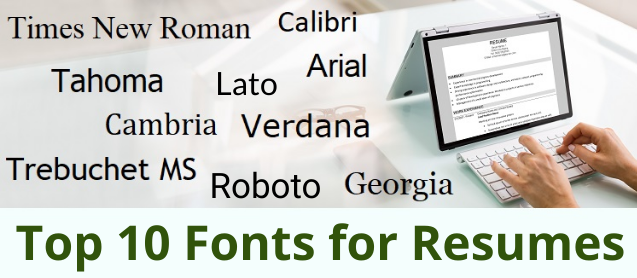
How to write a convincing cover letter

COVER LETTERS
Over 50 Sample Cover Letters
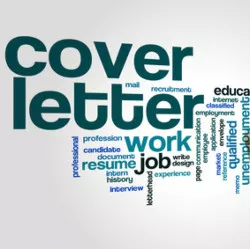
4 Cover Letter Formats

Sample Email Cover Letter
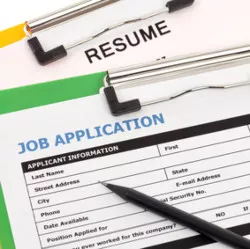
Basic Cover Letter Template
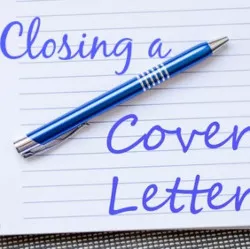
How to Close a Cover Letter

How to Start a Cover Letter
Entry Level Cover Letters
To Top of Page
Don't Miss These Latest Updates
Problem-solving is a key skill for today's workplace. Problem-solving behavioral interview questions
Compelling sample interview answers to "Why do you want to work for this company?"
11 essential supervisor interview questions and answers plus industry specific supervisor Q&A .
How to ask for a letter of recommendation with this sample email requesting letter of recommendation .
What are the top 10 reasons for leaving your job? Find out acceptable reasons for leaving a job.
Sample employment acceptance letter and email to properly confirm your acceptance of the job offer and employment contract.
What are your strengths? Find out the 11 essential workplace strengths at list of strengths and weaknesses
Interview Preparation
Interview Questions & Answers
Interview Guides
After the Interview
The Job Offer
Latest News
© Copyright 2023 | Best-Job-Interview.com | All Rights Reserved.
Explore Jobs
- Jobs Near Me
- Remote Jobs
- Full Time Jobs
- Part Time Jobs
- Entry Level Jobs
- Work From Home Jobs
Find Specific Jobs
- $15 Per Hour Jobs
- $20 Per Hour Jobs
- Hiring Immediately Jobs
- High School Jobs
- H1b Visa Jobs
Explore Careers
- Business And Financial
- Architecture And Engineering
- Computer And Mathematical
Explore Professions
- What They Do
- Certifications
- Demographics
Best Companies
- Health Care
- Fortune 500
Explore Companies
- CEO And Executies
- Resume Builder
- Career Advice
- Explore Majors
- Questions And Answers
- Interview Questions
Choosing The Best Font For Cover Letters and Resumes
- Cover Letter Format
- Salutation and Greeting
- Who To Address When Unknown
- How To Start A Cover Letter
- How To End A Cover Letter
- Best Cover Letter Font And Size
- Cover Letter Spacing
- Cover Letter Length
- Key Elements Of A Cover Letter
- How To Write An Address
- Official Letter Format
- Cover Letter Opening
Find a Job You Really Want In
When seeking the ideal job, your cover letter font, as well as your resume font, are your initial opportunities to showcase your qualifications and professionalism. Your choice of fonts and font size plays a pivotal role in leaving a lasting impression on potential employers. Discover how selecting the best cover letter fonts and font sizes for your application can significantly impact your job application’s success..
Key Takeaways:
Pick the appropriate font for the role and be stylistically consistent throughout your resume . This helps makes a more professional appearance
Good choices for standard, professional fonts to use on a resume include Times New Roman, Arial, Helvetica, and more – always stick to fonts that look simple and clean.
A page that’s too cluttered with text looks unprofessional and doesn’t give the hiring manager a good reading experience, so make sure to use white space appropriately.

Why does font matter in a cover letter?
Picking an appropriate font size for a cover letter, personalize your font selection, including white space, reminders for email cover letters, best fonts for your resume 2023 faq, final thoughts.
- Sign Up For More Advice and Jobs
Choosing the right cover letter font and resume font is important because can make or break whether your document is visually appealing and giving the impression you want. To pick your cover letter’s font, you should first think about what your intention is for your letter. For cover letters, the main intention is for your words and message to do all the talking. This means the font should not be artsy, fun, or obscure. It should allow your words to be immediately legible.
Additionally, consider being consistent in your font choice for both your cover letter and resume. The stylistic consistency may seem like a small detail, but it allows for recruits or hiring managers to easily flow from one document to the next, without any distractions in the way.
The size of your font is equally as important as choosing the correct font for your cover letter. If the text of your letter is too small or visibly challenging, your application might be passed up for another candidate.
There are three general options when picking a font size, 10, 11, or 12. Your cover letter should always fit on one-page, so consider this when formatting your first draft. A smaller font is appropriate if it helps keep all of your text on one page. However, if your cover letter is on the shorter side , choosing font size 12 is equally as appropriate.
It’s also important to note that different fonts come in a variety of sizes.
Once your cover letter is written, spend some time on formatting to make sure it looks good and fits on one page. If you have already selected the smallest size and your copy bleeds into a second page, try adjusting the margins or see where you can cut to condense the letter.
While there is no science behind picking the perfect font, there are specific fonts that are highly regarded for their perception of being easily readable, professional, and clean. Below, we outline some of the best cover letter fonts to choose from.
Arial features crisp lines and no-frills, an easily readable and familiar font for a cover letter . Being one of the most popular cover letter fonts in the world, it’s also beneficial as the standard font for Microsoft Word and Google Docs. There’s a good chance your recruiter or hiring manager has this font existing in their word processor of choice.
Avenir is a good way to be bold on your resume and cover letter but without taking the risk. This font features playful curves that help liven up any piece of copy to stand-out in the best way possible. It’s a good choice of font if you are looking to get into the design space or any creative type of job.
Calibri was initially designed by Microsoft as a candidate to replace Times New Roman in Word, and it’s a standard font usually found on resumes or cover letters. With its clean and simple typeface, it’s easily one of the most readable fonts out there. It’s both familiar and friendly, a great choice for any cover letter.
Cambria has a serif face and traditional design that makes it easy to read both in print or on the computer screen, even in low resolutions. The even spacing and proportions make this an ideal choice for cover letters.
Garamond is a more delicate font, but with a classic serif form, good for conveying an air of sophistication on resumes. Based on sixteenth-century designs, the Garamond style typefaces are perfect for both print and digital cover letters readability.
Georgia is a popular font developed by Microsoft, and can be a good choice for cover letter font because it’s unique yet clean. The serif typeface is both elegant and legible, with a mixture of both thick and thin strokes. This font is also used by Georgiacompanies in their branding, such as Amazon and the New York Times.
Helvetica is one of the most widely used sans-serif fonts in the world. Its neo-grotesque design was first brought to popularity by Swiss designers. Its neutral and clean look has made it a top choice for many businesses.
Times New Roman is the most traditional font of all, and is likely the most popular choice for resume font. It is popular for most job seekers with its simple and elegant design. Keep in mind that since this is one of the most common resume and cover letter fonts, it’s not something to use if you’re looking to be unique or convey creativity. But that’s not to say it’s not a great choice. This is a safe and easy font choice for your cover letter.
Trebuchet MS is a great font choice if you are looking to fill a little extra space on your cover letter. Being a bit broader with thicker lines, this font will fill the page and allow for easy readability. It’s also a common font found in most word processors and Google Docs.
Verdana was initially designed to be readable in small sizes and on low-resolution screens, making it perfect if you need to use a smaller font size for your cover letter. It has a large x-height with wide proportions and letter-spacing to allow for easy legibility.
Montserrat is a contemporary sans-serif font that reads as both stylish and legible on cover letters. Its clean and minimalist design, coupled with uniform stroke widths, lends a modern and fresh look to your application materials. Montserrat is an excellent choice for those seeking a clean and trendy aesthetic while maintaining readability and professionalism in their resume or cover letter.
Baskerville is a classic serif font known for its elegance and readability, two qualities you may want to embody when writing your cover letter. With roots dating back to the 18th century, Baskerville offers a sense of tradition and sophistication. The well-defined letterforms and high contrast between thick and thin strokes make it a perfect choice for conveying professionalism and attention to detail in your resume or cover letter.
Going with one of the listed fonts for your cover letter and resume puts you in a good place for the formatting of your cover letter. As with many things, font choice is subjective, and you should make the choice you feel most comfortable with.
The last thing to be mindful of is how many fonts you choose to use for your cover letter.
Since there are a few different pieces to a cover letter, you may be tempted to use different fonts for headers , introductions , or conclusions . However, it’s good practice to only use one font for your cover letter. Maintaining this consistency ensures a smooth reading process for your recruiter or hiring manager.
When formatting your cover letter, it’s always important to remember that there is a significant amount of space required at the top of your letter. Additionally, you should leave white space between each paragraph and each new section of the cover letter .
Usually, word processors have templates that you can use to make sure you properly space your cover letter. Again, don’t forget that your entire cover letter should fit on a single page, so it’s important to take some time to play with the formatting once you are done writing your letter. Perfecting your formatting ensures you will make a stellar first impression.
The best practices outlined in this article are mostly for cover letters that are in hard-copy or emailed as a Word document or PDF attachment. If your job application instructs you to include your cover letter in the body of the email, you might be tempted to copy, paste, and send.
However, be mindful of how the formatting shifts when you copy and paste things into an email, making it tricky for the hiring manager or recruiter to read. Be sure you either fix the formatting in the body of the email or copy and paste it as plain text directly into the email.
What role does font choice play in my resume and cover letter?
Font choice plays a crucial role in your resume and cover letter as it directly impacts readability and the overall impression you make on potential employers. The right font can enhance professionalism, clarity, and visual appeal, while the wrong choice can distract from your content or make it difficult to read.
Should I use a serif or sans-serif font for my resume and cover letter?
Whether to use a serif or sans-serif font depends on your personal preference and the style you want to convey. Serif fonts, with their small decorative strokes, often exude tradition and professionalism. On the other hand, sans-serif fonts are clean and modern, offering a sleek and contemporary look. Ultimately, the choice should align with your industry and the image you want to project.
The font you choose is your resume’s first impression, so choosing the right one can you get your job applications started on the right foot. The way your resume is organized and how it looks at a glance can say a lot about you even before the hiring manager even starts to read it.
Be sure to use a simple, professional font and break your resume down into sections balanced out by plenty of white space.
How useful was this post?
Click on a star to rate it!
Average rating / 5. Vote count:
No votes so far! Be the first to rate this post.

Caitlin Mazur is a freelance writer at Zippia. Caitlin is passionate about helping Zippia’s readers land the jobs of their dreams by offering content that discusses job-seeking advice based on experience and extensive research. Caitlin holds a degree in English from Saint Joseph’s University in Philadelphia, PA.
Matt Warzel a President of a resume writing firm (MJW Careers, LLC) with 15+ years of recruitment, outplacement, career coaching and resume writing experience. Matt is also a Certified Professional Resume Writer (CPRW) and Certified Internet Recruiter (CIR) with a Bachelor of Science in Business Administration (Marketing Focus) from John Carroll University.
Recent Job Searches
- Registered Nurse Jobs Resume Location
- Truck Driver Jobs Resume Location
- Call Center Representative Jobs Resume Location
- Customer Service Representative Jobs Resume
- Delivery Driver Jobs Resume Location
- Warehouse Worker Jobs Resume Location
- Account Executive Jobs Resume Location
- Sales Associate Jobs Resume Location
- Licensed Practical Nurse Jobs Resume Location
- Company Driver Jobs Resume
Related posts
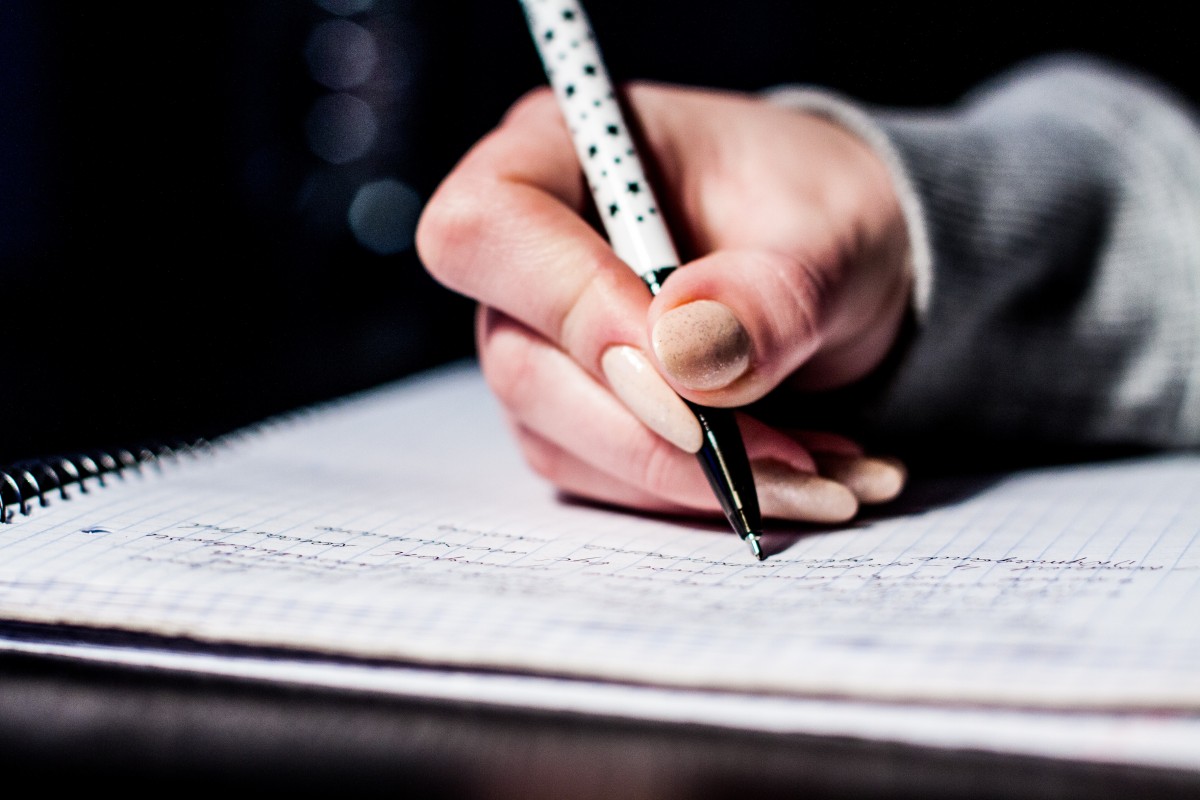
How To Write A Cover Letter Body (With Examples)
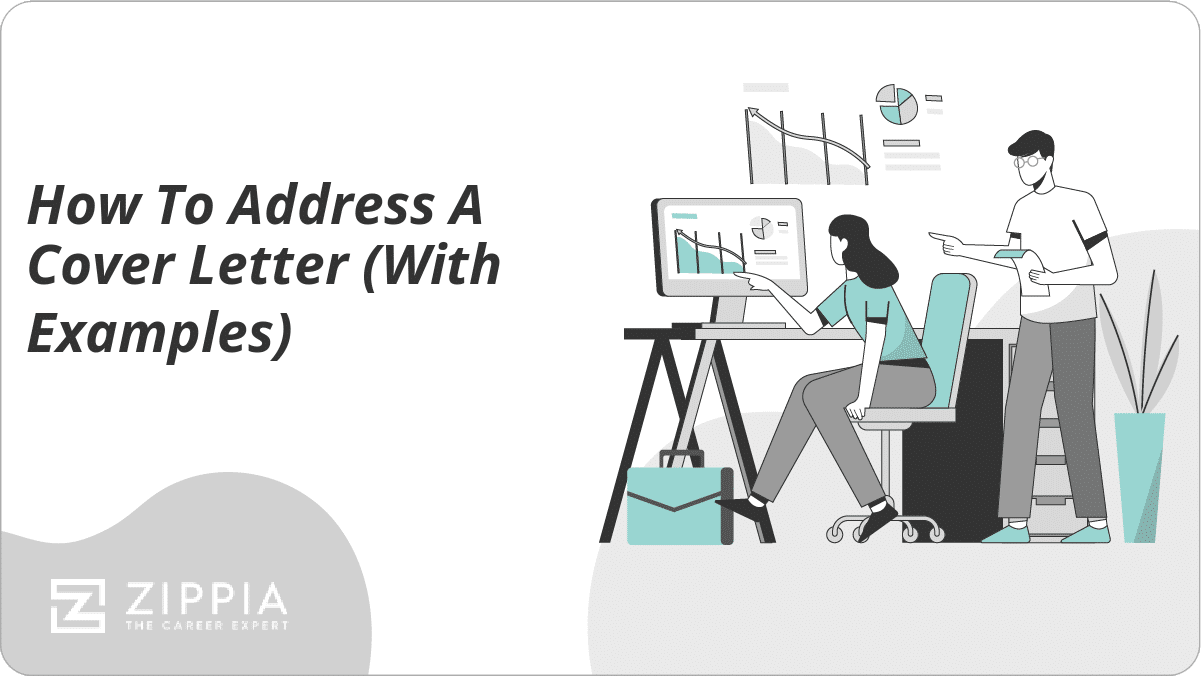
How To Address A Cover Letter (With Examples)

How To Write A Letter Of Intent For A Job (With Examples)
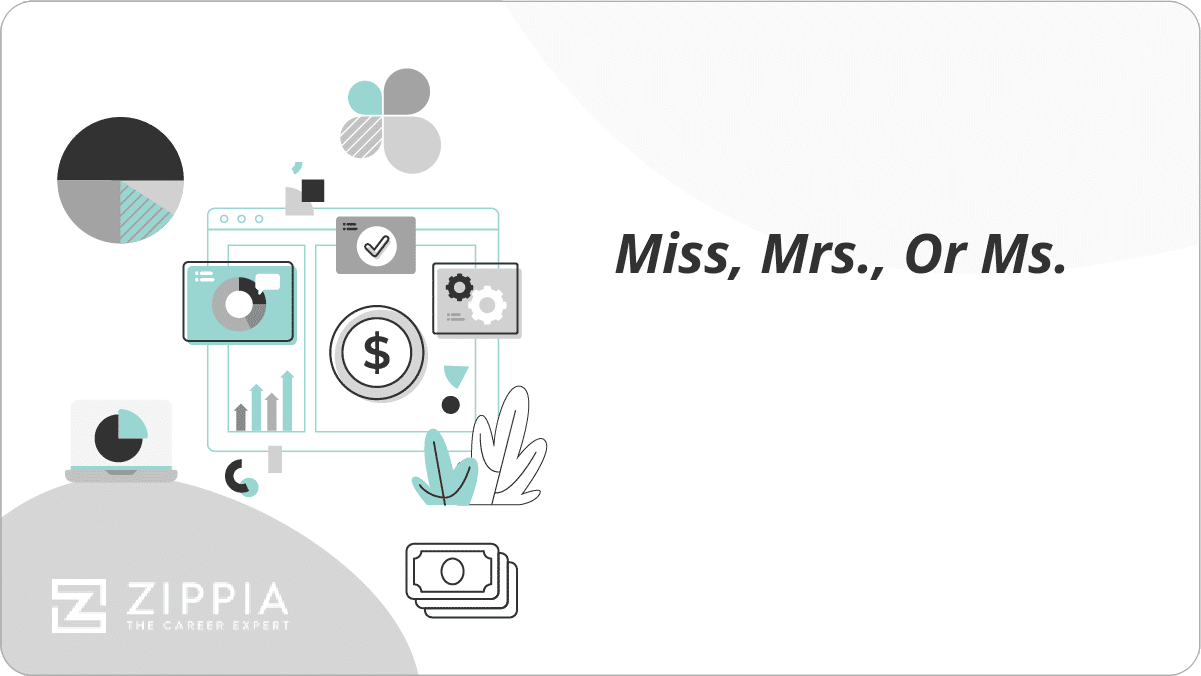
Miss, Mrs., Or Ms.: When To Use Each
- Career Advice >
- Cover Letter >
Best Cover Letter Fonts for Applications
When you submit a job application, it’s important that hiring managers can read your cover letter and resume easily. Choosing the right font for your application materials is essential in making this part of the process flow smoothly. In this article, learn what the best cover letter fonts are for your next cover letter.
Why are cover letter fonts important?
Choosing the right font is an important step to making sure your cover letter is legible and professional looking. By selecting a simple, easy-to-read font for your cover letter, you can increase the chance that your job application will make a good first impression on the hiring team.
A cover letter with the correct spacing and size can also make it more visually appealing. A hiring manager may be more likely to read the content of your cover letter if it looks simple and businesslike.
Sometimes, a hiring team may receive hundreds of applications. Since a cover letter is typically the first document a recruiter reviews, the format should be scannable so they can gather basic information about you and your qualifications. If your cover letter impresses a recruiter, they may be more likely to review the rest of your application materials and invite you to an interview.
How to choose the best cover letter font
Follow these steps to choose the best cover letter font:
1. Choose a font that you can use in your cover letter and your resume
When you’re choosing a font for your cover letter, make sure to pick a font that you can use throughout your application and resume. Using one font for both your cover letter and resume creates consistency and looks more professional.
2. Opt for a professional and easy-to-read cover letter font
When choosing a cover letter font, select a simple option that conveys your professionalism. Since the hiring team may read your application on a desktop, laptop or mobile device, you should ensure that your cover letter font is easy to read even on smaller screens.
You can choose between a serif and sans serif font type. Serif fonts have small strokes at the ends of letters. Sans serif fonts have no strokes at the ends of letters. Opting for a serif font can add a personal style to your application, while choosing a sans serif font can make your letter look simple and straightforward.
Here are the most popular cover letter fonts for job applications:
- Times New Roman: As one of the most common fonts for professional documents, Times New Roman can make your cover letter appear uncomplicated. You can use Times New Roman when applying to most companies.
- Garamond: This serif font features a classic appearance that can make both your cover letter and resume look professional. Garamond works best for printed cover letters.
- Cambria: For a less formal option, you can consider Cambria. This is the standard font for Microsoft Word since it’s easy to read for many users.
- Georgia: If you plan to email your cover letter, Georgia is an ideal font. You can also use it if you need to send your materials as electronic documents.
- Arial: This is one of the most popular sans serif fonts, as it is visually appealing on both paper and electronic devices.
- Helvetica: Similar to Arial, Helvetica is a simple, straightforward sans serif font. Many people believe Helvetica has a more sophisticated look, making it a popular option.
- Calibri: With its narrow style, Calibri is easy to read on screens, making it a good choice for electronic applications.
3. Use standard formatting with your font
Your resume might include a variety of text formatting, such as bold or italics, to emphasize various details. However, you should use standard formatting throughout your cover letter for simplicity.
4. Select a professional font size and use it consistently
Choose a font size that is clearly legible. For most fonts, 12-point is the standard size, but some fonts may look better at 10- or 11-point. To find the ideal size for your cover letter, try each of these standard sizes to find the most legible version. Make sure your cover letter easily fits onto a single page.
5. Use appropriate spacing with your cover letter font
The spacing of your cover letter can also have an effect its readability, so it can be helpful to examine different options. Single, double and 1.5 spacing are the most common selections. Remember to leave 1-inch margins around the edges of the document for additional white space and improved legibility.
6. Review your cover letter font choice before submitting
After selecting a font, size and spacing, review the letter prior to submitting it. Make sure the entire cover letter appears both professional and legible. If you are emailing your application materials, consider sending the email to yourself first so you can review first before sending it to the hiring manager.
7. Save the font and formatting you use in your cover letter
If you plan to send your cover letter electronically, take steps to preserve the format first. When you email your application in word processing format, such as a Microsoft Word file, the formatting may not transfer correctly. Consider converting your cover letter and resume to a PDF file to retain the style.
If you intend to copy and paste your cover letter into the body of an email, make sure to reapply the font, sizing and spacing to preserve its appearance.
404 Not found
- Search Search Please fill out this field.
- Career Planning
- Finding a Job
- Cover Letters
How to Choose the Best Font and Font Size for Cover Letters
:max_bytes(150000):strip_icc():format(webp)/ADHeadshot-Cropped-b80e40469d5b4852a68f94ad69d6e8bd.jpg)
Keep it Professional
Choose one simple font, pick an appropriate font size, how to make your font selection, include plenty of white space, sending email cover letters.
Lechatnoir / iStock / Getty Images
When you are writing a cover letter , it's important to use a font—or type style—that is clear and easy to read. Consider that hiring managers have to review dozens, if not hundreds, of applicants for a position. They may immediately pass over a cover letter and resume that isn’t instantly legible.
Be sure to make your font large enough so that the reader doesn't have to squint to read your letter, but not so large that your letter doesn't fit well on the page.
When it comes to choosing a font to use in your cover letter, your best bet is to keep it simple and professional. You want your words and message to stand out, not your font choice.
Avoid using unprofessional novelty-style fonts such as Comic Sans, handwriting, or script-style fonts.
Ideally, the font used in the cover letter will be both the same size and style as the one used in your resume, to help you present a cohesive package.
Review these tips for determining the right font for your cover letter, as well as what size it should be, and which styles are and are not appropriate to use in a cover letter.
Using a simple font will ensure that your cover letter is easy to read. Basic fonts like Arial, Courier New, Calibri, Verdana, and Times New Roman work the best. Most word processing and email programs will default to a professional and easily readable choice.
Limit yourself to one font in your cover letter; it's best not to mix several fonts in one document.
There is no need to use different styles in a cover letter. Avoid underlining or italicizing, and use boldface text only when emphasizing quantifiable achievements that need to “pop” on the page.
Depending on how much content you have in your letter, select a 10- or 12-point font size.
It's best if you can format your cover letter so it fits on one page, with margins that are no larger than 1” and no smaller than .7”.
If your letter includes a heading with your name and contacts information, you may choose to make this font slightly larger.
When you are using Microsoft Word, you can select a template for your letter or start from scratch with a new document. If you're using a different word processing program, the process is similar.
- Select a font from the list at the top of your document before you start writing your letter, or:
- Type your cover letter.
- Highlight the content of your letter.
- Either select the font from the pop-up window or select the font from the list at the top of the document.
- Select the font size you want to use the same way.
- Proofread your cover letter.
- Print your cover letter, even if you are going to upload it online, to make sure that it is formatted, properly spaced, and looks the way you want it to.
Regardless of the font size, you select, there needs to be space at the top of the letter and between each paragraph and each section of your cover letter . Here's how to space your cover letter .
You may need to try a couple of different sizes to make sure that your cover letter fits on a single page, and you have enough white space in between paragraphs. Review these formatting tips to be sure your letter will make the best impression.
The information above applies primarily to instances where you are sending a traditional cover letter by snail mail or when you are sending a formal cover letter as a Word or PDF attachment to an email message .
Copying and pasting a cover letter into the body of an email message may change the formatting, making it difficult to read for an employer who may have a different computer system.
The safest thing to do when you are copying and pasting your cover letter into an email is to remove the formatting and reformat it as plain text. Send a copy to yourself before you send it to an employer to double-check that it reads correctly.
404 Not found

The Top 6 Tips for Writing a Powerful Cover Letter

A cover letter is a written, one-page document expressing your interest in a job opening. It should specifically address your interest in both the role and the company, and what skills and relevant experiences make you a great fit for the position. As importantly, it’s a chance to let your personality shine through and show off your communication skills.
Even when an employer is convinced that you meet all the qualifications based on your resume, a cover letter gives that extra spark that can greenlight your application to move through the hiring process and land you an interview.
In this article, we’ll share the top 6 tips for writing a powerful cover letter and hopefully help you land the job you want.
1. Do Your Research
Start off your cover letter by addressing it to a specific person and not using the dreaded phrase of “To Whom it May Concern.” This shows that you took the extra time to do research on their website or Linkedin to identify the hiring manager’s name.
If you know any individuals from the company, ask them if you may “name drop” them in your introduction. To further demonstrate that you’ve done your homework on the organization, reference specific initiatives and programs. You could also cite other facts that prompted you to apply, such as a recent article or announcement.
The above recommendations showcase to the employer that you put in the extra effort to research them, which in turn, demonstrates your genuine interest in working for them.
2. Tailor Everything
Tailor each cover letter to both the organization you are applying to and the specific role. Make the case as to why you would be good at that particular job and an asset within the larger organization.
You should incorporate keywords and phrases from the job description into your cover letter. Make sure to tailor them to your specific experiences and accomplishments. It’s always helpful to reiterate job description language with data-driven details.
Here’s an example from NYFA Classifieds Sales Manager, Mary-kate Grohoski, back when she applied to her current role:
The Sales Manager’s job description detailed the responsibility of “Managing the sales process from prospect identification, close of sales, and follow-up.” In her cover letter, she rephrased the above language and incorporated her experience with the following line: “By managing the sales process of over 10 Fine Books and Manuscripts auctions per year in the New York showroom, I oversee all client communications and portfolios, as well as the management of over 2,400 auctions lots per year, and develop and maintain long-term corporate relations.”
3. Be Authentic
In a sea of often standardized cover letters, being authentic could make you stand out. Sincere interest comes through in your writing, so take the time to truly reflect on what genuinely excites you about this opportunity. Speak to why you want the position and be specific about the aspects of the role that intrigue you and are aligned with the vision you have for yourself professionally.
When reviewing your cover letter, consider how the language you’ve chosen could inspire the hiring manager to look forward to what you could achieve together.
4. Solve a Problem for the Employer
Don’t make the cover letter all about you; it’s as much about the employer as it is about you. Connect how your previous experience would be an asset to this particular organization based on what they want to achieve. (Quick tip: Usually, their goals for the role are outlined in the job description.)
How can your skills benefit the organization and help them grow? Do you have ideas as to how you’d contribute to their specific programs and take them to the next level? Reference specific skills, experiences, and projects to demonstrate the value you would be bringing to the role.
Employers are always looking to bring new skills into their teams, to not only fill gaps, but to elevate their teams and organizations’ performance. By relating your experience back to the organization, you are helping them draw clear connections between your background and their goals for the role.
5. Keep it short
A good rule of thumb is to keep your cover letter under a page long, but even shorter is better. It’s a challenge to do so, since there is a lot you may want to cover, but there are some tricks to help you stay succinct.
Something to keep in mind is to not repeat what is in your resume, but instead, provide supplementary information and context to your resume’s content. Another tip is to focus on the 3-4 most relevant transferable skills you can bring to the role, instead of trying to cover every qualification and skill mentioned in the job description. Lastly, it’s always a good idea to have a friend or mentor review your resume and make recommendations on what you could cut.
At the end of the day, remember that the hiring manager is reading countless cover letters so try to make it as seamless for them as possible and make every word count.
6. Use a template, but mainly for formatting purposes
It’s a great time saver when you have a perfectly formatted cover letter template ready to be filled out so that you don’t have to deal with time consuming adjustments to margins, fonts, spacing, and alignment.
A cover letter format pretty much follows the standard business letter format which contains a header with yours and the hiring manager’s contact information, a salutation, an opening paragraph, one or two body paragraphs, a closing paragraph and a sign off. Quick tip: Include your email address in your contact information, in case the cover letter gets separated from your resume.
Apart from that, you can standardize some aspects of the content just to have a visual filler in place or even use the text as a starting point, but always plan to customize them further for each application.
Overall, as you are writing your cover letter, try to keep a fine balance between talking about yourself, the employer, and what you can achieve together. Always aim to be answering the question of “Why should we hire you?” and back up everything you say with specific examples from your background.
– Katerina Nicolaou, Account Manager
Put these tips to use by finding your next job on NYFA Classifieds , the go-to listings site for artists, arts administrators, and museum professionals. Follow us @nyfa_classifieds on TikTok for more creative career tips.

Donate to NYFA
- Donation amount: Select donate button or input other amount is required
- Acknowledge as: Input is required
- First name: Input is required
- Last name: Input is required
- Email: Input is required
- Email: Must include '@' symbol
- Email: Please enter a part following '@'
- Country: Selection is required
- Street: Input is required
- City: Input is required
- State: Selection is required
- Zip: Input is required
- Address: Input is required
- reCaptcha is required
insert message here
New York Foundation for the Arts 29 W. 38th Street, 9th Floor New York, NY 10018

Terms & Conditions | Privacy Policy | Site Map
Table of Contents
Why Book Cover Fonts Matter
Common elements of the best book title fonts.
- Book Cover Font Copyright
The Best Book Cover Fonts For Nonfiction Books
- Honorable Mentions
Book Cover Fonts: How To Choose One That Converts

You get one chance to make a first impression.
We all know this. It’s why we dress up for interviews and dates.
Yet, so many Authors ignore it when it comes to book cover fonts.
They put countless hours into writing a good book and then put almost no effort into the first thing people see: the cover, and specifically, the words on the cover.
Let me be very clear about this for you:
Bad typography can ruin a good cover .
Some of the biggest and most common mistakes include:
- Using text fonts instead of book title fonts
- Failing to match the typeface to the target market
- Not integrating the lettering into the book cover design
- Applying the font straight “out of the can”
- Making the font too small for the Amazon thumbnail
That’s why I’m sharing the best book cover fonts for nonfiction books, with important tips on how to use them: so you won’t make this mistake on your book .
Before I explain why book cover fonts matter, let’s be very clear:
Don’t design your cover yourself.
You should not design your own cover unless you are professionally trained in graphic design, and have a lot of experience designing book covers .
When you go to an interview or on a date, do you design your own clothes?
Treat your book cover the same way.
OK, now that’s settled, let’s dive into the font.
When you see a title on a book cover, you might think you’re just reading the words. But that isn’t true.
Your brain is taking in the lettering as an art form.
That’s what typography is: the artistic design of the letters themselves.
And your mind takes that in before you’ve even read the title.
In fact, your subconscious mind makes a few snap judgments about every book based on its typography:
- Is it professional or amateur?
- Is this for people like me?
- Was it written by an expert?
- Is it serious or funny?
- Will it be easy to understand?
- How much work went into it?
Is your brain really getting all that from the typeface?
Because your subconscious mind sees everything visual as a conscious design choice that sends a specific signal.
You can see this clearly with a few quick examples.
Professional vs. Amateur
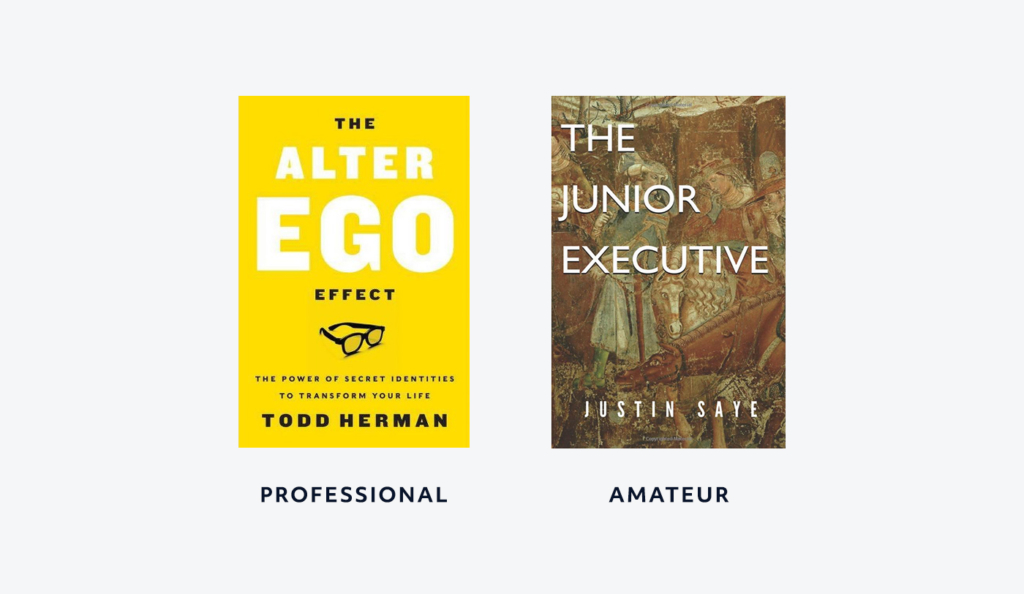
The difference between a professional cover font and an amateur choice is obvious.
The font on the left is modern and professional.
The font on the right is not a title font, and it has not been integrated into the design.
You can see immediately how a bad font makes the book look bad.
Direct Voice vs. Humor
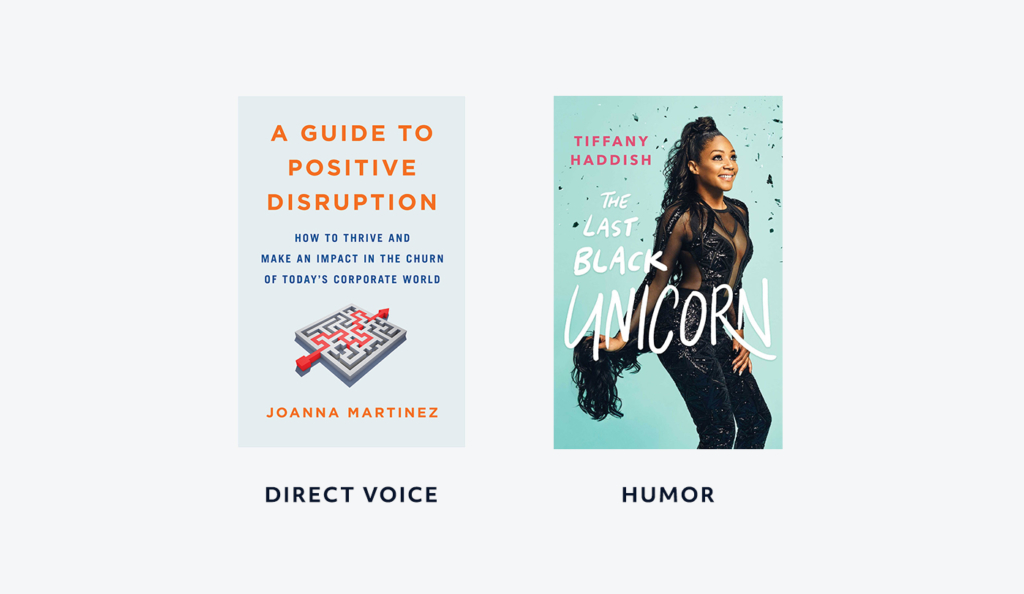
Choosing the right font isn’t always about good fonts versus bad ones.
Sometimes it’s about sending the right message.
If your book uses humor, you want readers to know that up front.
If it doesn’t, you want them to know that too.
This is about branding and positioning.
Choosing the best font for the title and the author’s name projects your brand to the reader. It tells them what kind of book this is.
Dense vs. Simple
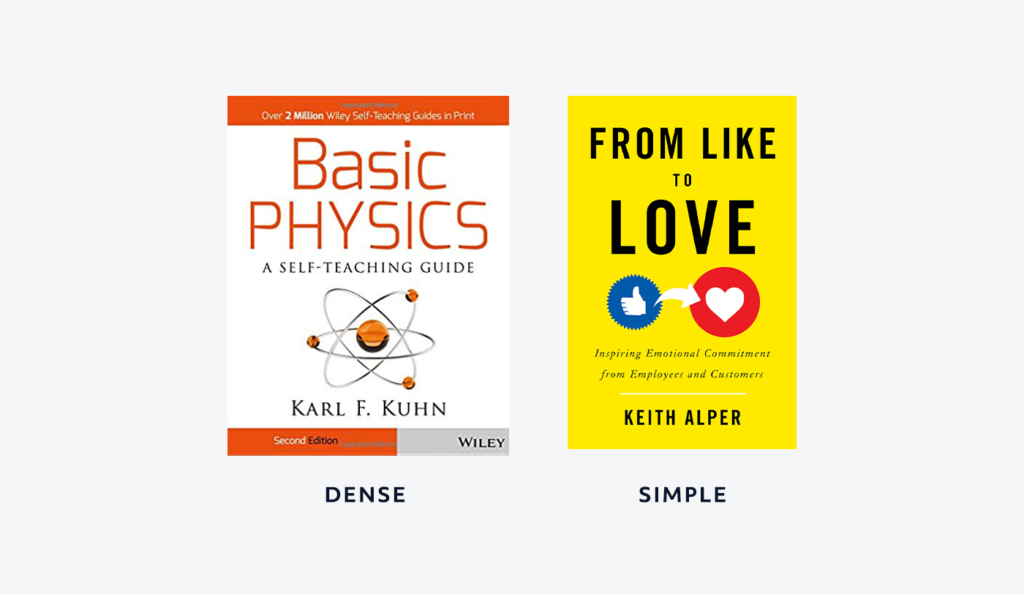
Your book’s cover font can even communicate the “density” of the writing style.
Professional books written for a lay audience project a clean, simple feel. The font itself is easy to understand.
Textbooks tend to use more complex fonts, projecting a collegiate feel.
You can see how much design matters.
Before you ever thought about it consciously, your brain recognized the book’s intended audience.
The best book cover fonts have at least three things in common.
1. They all project professional, intentional design.
A cover font can be serif or sans-serif, modern or traditional, but it has to be eye-catching.
Most importantly, it needs to be chosen on purpose for that particular book .
2. They are legible in a thumbnail cover image.
Long titles call for a tall, condensed font. Shorter titles need a wider font to sit comfortably in the frame.
Title fonts are not one size fits all.
But every bestselling book uses a font that was chosen carefully to be visible and arresting, standing out against other titles.
This is because such a high percentage of sales now occur online. Your cover needs to be visible in a thumbnail, on a mobile device.
3. They are never straight “out of the can.”
The fonts on professionally designed covers are never just typed onto the cover .
Graphic designers use shading and effects to give cover lettering the right artistic feel.
They stretch or condense the spacing to balance the lettering across the cover, giving it the right “weight.”
Even the perfect cover font will look unprofessional unless it is worked into the overall design.
Important Note: Book Cover Font Copyright
Just because you have a font on your computer doesn’t mean you can use it on a cover.
Fonts are a form of art and are protected by copyright.
If you want to use a font on your cover, you have to get the right to use it.
Fortunately, that’s easy to do, but most great title fonts are not free .
In book publishing, you get what you pay for .
If you’re working with a good designer, they will have access to thousands of different fonts and can help you choose the right font for your book.
Designers use fonts every day for everything from body text to movie posters. They understand font styles (thin, bold, narrow, condensed, etc.) and can find the best fonts for each individual project.
Good cover designers are also familiar with book marketing and will make sure your title and author name look great with the cover as a whole.
But if you’re self-publishing and want to create your own cover, you can download the fonts you need.
Just be sure to check the licensing so you know what it allows .
If you already know which font you want, search “download [fontname] font” in Google to find it.
For example: “download Gotham font.”
Or, if you haven’t chosen a font yet, there are plenty of font sites you can browse through.
The best sources for free fonts with commercial use rights are:
1. Google Fonts
If you want to find your own cover font, start with Google fonts .
According to Google, every font on the site has been released under an open-source license , for use in any project.
It has tons of great fonts, and you can type in your own title while searching to see how it would look.
Below the search bar, select the “Display” checkbox for title fonts.
Display fonts are for titles, as opposed to text fonts, which are better for interior book design .
You can also select either serif fonts or sans-serif fonts to narrow your search.
2. FontSquirrel
The FontSquirrel tagline says “100% free for commercial use.” But the FAQs advise users to read each individual font license to be sure.
There are thousands of fonts on the site. The options in the right-hand column can help you narrow it down.
For book covers, choose “Display” under classifications, “Condensed” under tags, and “ebook” under licenses as a good place to start.
If you have an Adobe Creative Cloud subscription , all the Adobe fonts are free for commercial use. The license is included in the subscription.
The subscription itself is not free, but most designers have one. So if you’re working with a designer, which I strongly recommend , you’ll have access to any font here at no extra charge.
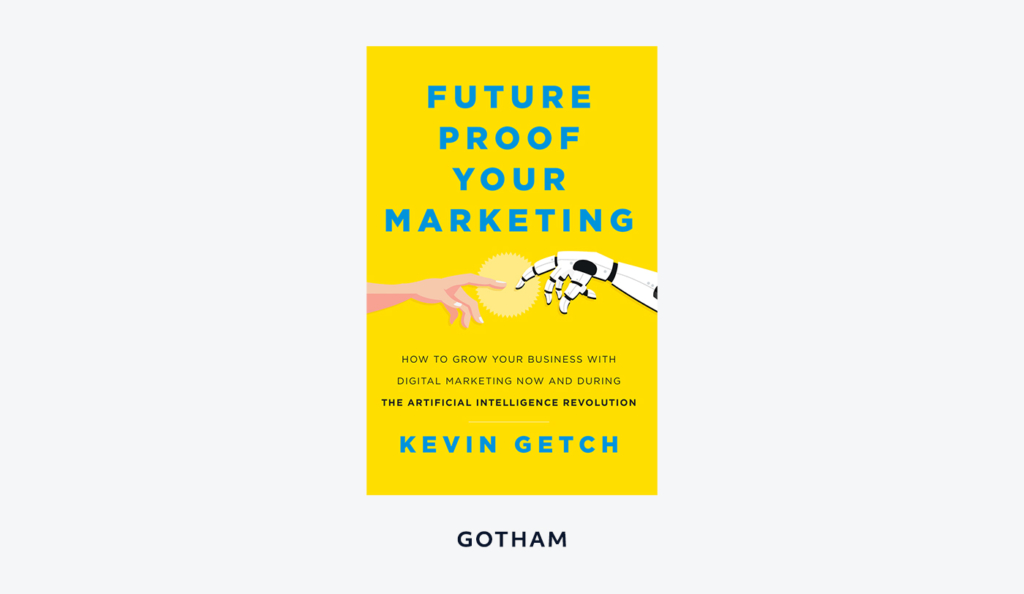
Gotham is a modern sans-serif font and one of our favorite fonts for nonfiction cover titles.
Everything about it says “clean,” “direct,” and “professional.”
Like most fonts, it has versions ranging from thin to bold, depending on your needs.
Gotham is the “go-to” font for general nonfiction.

For a serif font that projects a clean, professional image, Hoefler is an excellent choice.
Its soft embellishments capture a traditional sensibility in a modern look.
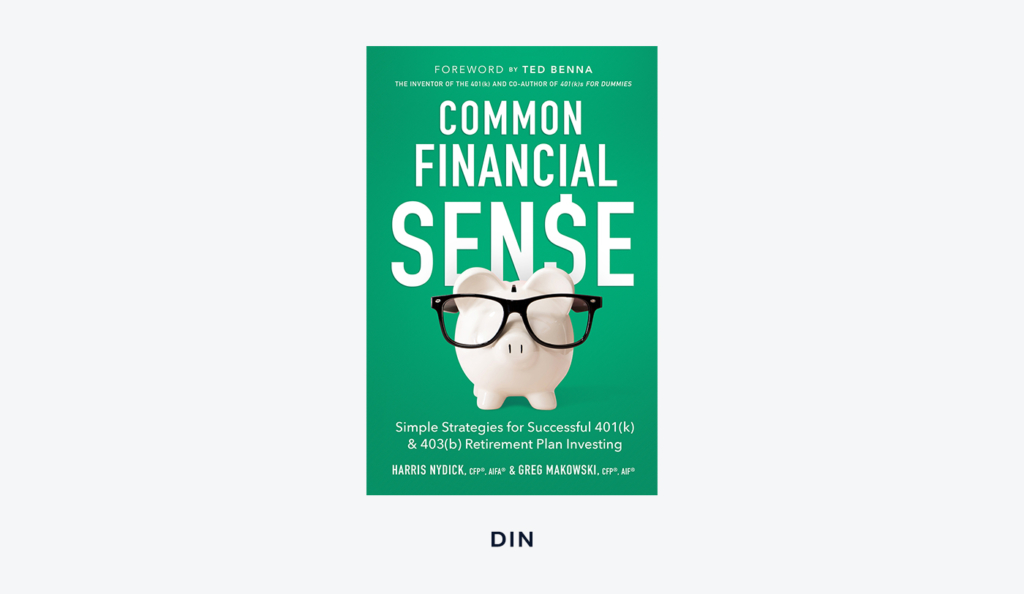
DIN is a simple sans-serif typeface.
It’s popular on technical books but looks great across a wide variety of nonfiction sub-genres.
DIN condensed is excellent for long titles and author names.
4. Trade Gothic

Trade Gothic is a versatile sans-serif font that comes in several styles and widths.
Its bold form in all caps is great for grabbing a reader’s attention.
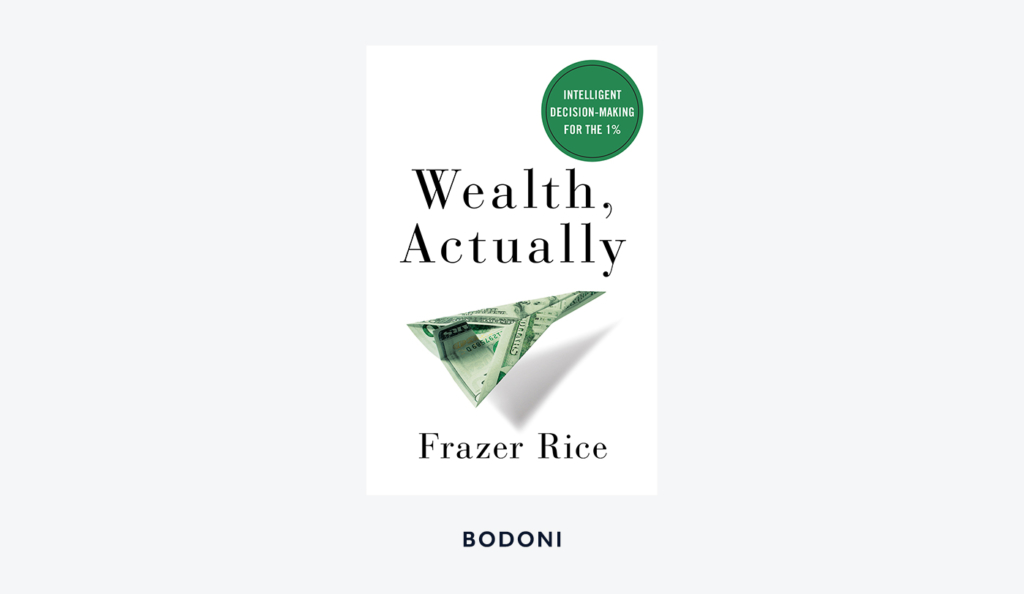
Bodoni is a serif typeface with a sharp contrast between its thin and thick lines, giving it a hint of modern elegance.
Despite its narrow edges, it reads well even in thumbnail images.
Honorable Mentions:
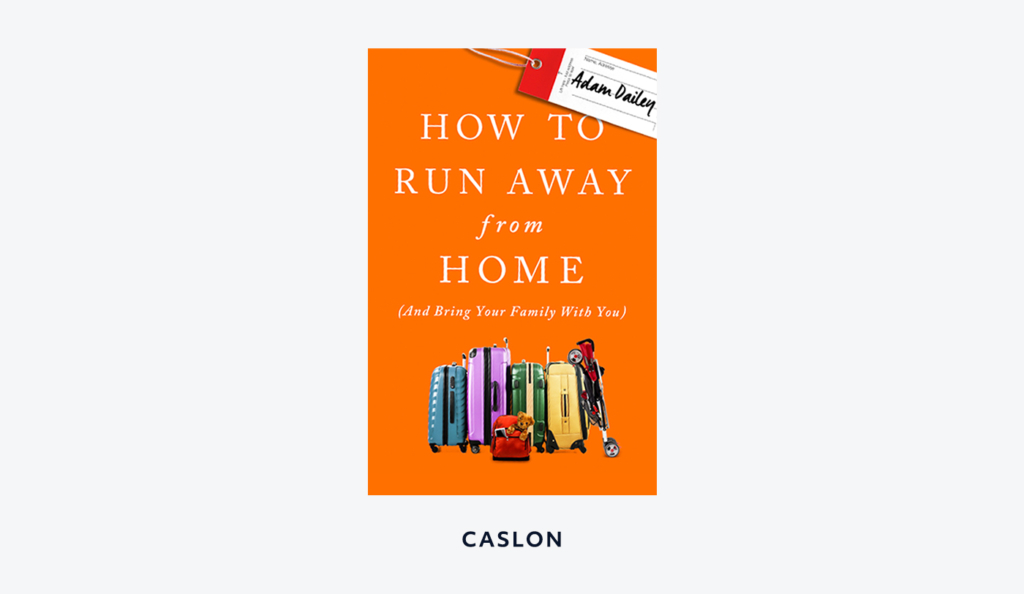
Caslon is a serif font with a slightly retro feel.
It doesn’t have as wide a range of applications as our top 5, but on the right cover, it can be the perfect choice.
7. Helvetica
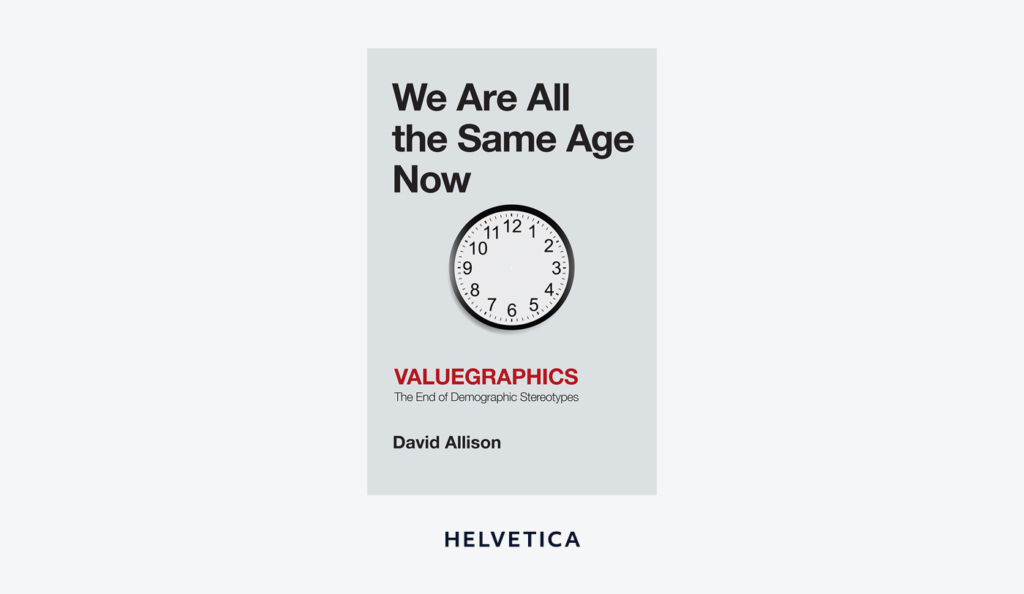
Helvetica is a sans-serif text font that works well for titles in the hands of a good designer.
It’s preloaded on just about every computer, but make sure you have a commercial use license before you use it on a book cover.
The Scribe Crew
Read this next.
How To Become A Published Nonfiction Author
The Best Self-Publishing Companies for Nonfiction
How to Write Your Book with A Hybrid Publisher
The best 11 free handwriting fonts in 2024

Your font choices are the voice of your designs; they communicate a message and tone to your audience.
With good typography (arrangement of text), you can cement your brand personality and boost audience engagement.
Handwritten fonts are one great way to achieve these goals.
Creating a sense of connection way before the Internet even existed, handwritten text can help you show brand authenticity and attract your audience’s attention.
In this article, we look at the power of handwriting fonts in more depth. We also look at 11 free handwriting fonts that you can access today!
Table of Contents
What are handwriting fonts?
Handwriting fonts are, as the name suggests, fonts that are made to mimic the natural flow and variation of handwriting. This means that, unlike traditional fonts, they might be slightly irregular between letters and vary in line thickness.
There are different types of fonts that look like handwriting . Some look like they have been written in marker, for example, while others look like they’re written in pencil.
The benefits of using handwriting fonts include the ability to:
- Boost engagement. By sparking emotions in your audience, you can create a closer connection with them. For example, some handwriting fonts evoke a feeling of nostalgia with their child-like feel.
- Make content feel more authentic and personalized. Even just adding a handwritten signature to the bottom of a letter can make people feel like the content was written just for them.
- Break up designs. Handwritten fonts can catch the eye in contrast to other types of text. For example, in a formal piece, they add a touch of informality and fun.
11 free handwriting fonts
Ready to start experimenting with some free styled fonts ? Discover the 11 best handwriting fonts in 2024 below!
The first three are examples of fonts that can be found directly in Picsart’s font generator . We’ll show you a step-by-step guide on how to include them as well as how to upload other fonts later in the article.
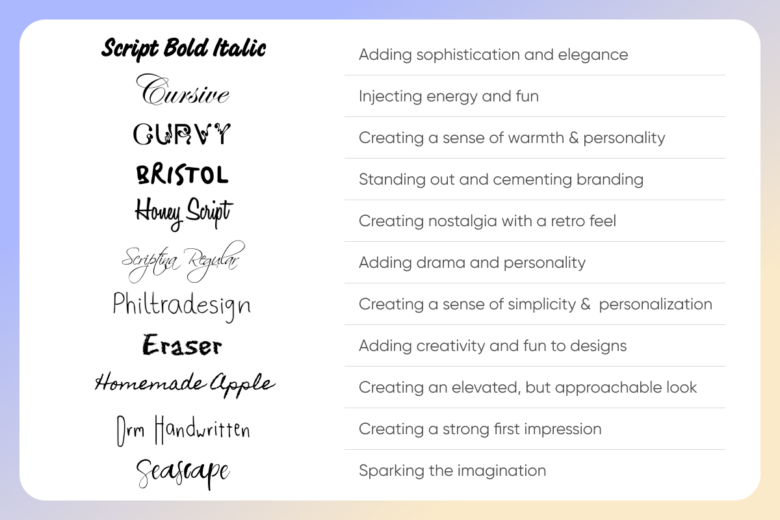
1. Script Bold Italic
If you’re looking for a fancy handwriting style that can add a touch of sophistication to your design, you can’t go wrong with Script Bold Italic. Intricate, but highly readable, it’s the perfect font for brand materials or elegant signage.
Stand out from the crowd with this fun, angled handwriting font. The all-caps makes it great for creating eye-catching headlines or adding energy to a banner.
Curvy is a rounded, almost child-like font with an “S” that slants to the left. It’s great for adding personality and conveying warmth and approachability.
4. Bristol Regular
Bristol Regular is one of the most famous handwriting fonts. With thick letters in a marker pen style, it’s got a highly distinctive look that’s perfect for creating a memorable brand.
5. Honeyscript
Honeyscript has a slightly retro style which makes it great for creating designs with a nostalgic feel. Add this to event flyers, social media graphics, and more to entice your audience by creating a stronger emotional connection.
6. Scriptina Regular
A sprawling font with cute flourishes on some of the letters, Scriptina Regular adds a sense of drama and personality to any design. Use it to embellish product labels, email newsletters, and more.
7. Philtradesign Handwritten Font
Philtradesign is a more stripped-back, simple handwritten font that appears very personalized. It’s ideal for creating unique business cards and letters.
With the appearance of crayon strokes, Eraser is a great font for showing creativity in a design. Use it to make your marketing assets stand out by being more fun and playful.
9. Homemade Apple
Homemade Apple is a polished, but approachable handwriting style that exudes warmth and personality. Use it to elevate brochures, flyers, and more.
10. Drm Handwritten
A narrow, elongated font with a totally unique vibe, Drm Handwritten is a great choice for logos, website headers, and anywhere else you want to create a strong first impression.
11. Seascape
With a whimsical daydreamy feel, Seascape is the ideal font for businesses that want to evoke feelings of adventure and imagination. Use it in packaging, website design, or email newsletters.
Making use of handwritten fonts inside the Picsart Font Generator
If you want to start creating more of a human connection with your audience, handwriting fonts are perfect.

- Head to https://tools.picsart.com/text/font-generator/
- Look through the categories on the left to find the types of fonts you want. The handwriting fonts we’ve recommended can be found in the “Fancy” and “Cursive” tabs.
- Type in the text box at the top to test them out or experiment with other cool fonts!
You can also add your own fonts inside Picsart’s website and mobile editors. Here’s how to do it on the website:
- Head to the Picsart editor
- Click “Uploads” in the left-hand tab.
- Select the “Fonts” tab on the right.
- Hit “Upload” at the bottom and search for your font.
- Now, use the Text button to add a text box, select it, and change the font in the bar at the top.
And here’s how you can do it on mobile:
- Locate the font file in your downloads.
- Click “Export” and click the Picsart logo.
- Open the Picsart app and click on the purple plus sign (+) at the bottom of the screen to start a new project.
- Add text to your project.
- Tap on the “Font” icon in the “Editor” toolbar, and then click on the teal arrow in the left-hand corner under your image to pull up our library of searchable fonts.
- Head to “My Fonts” where you’ll see the font you just added.
Discover some of the best handwritten fonts in our font generator or upload your own font styles in seconds for ultimate freedom and creativity.

Unique Father's Day ideas for 2024: Celebrate dad like never before

Happy Birthday Picsart Spaces! Celebrating One Year of Community and Creativity

Browse Related Articles

The power of color meanings: A guide to color symbolism

How to Enhance Mental Health Through Creativity: Advice From a Creative Scientist

A hue with a view: Designing your website color schemes

How Creativity Boosted My Mental Health and Family Relationships
From Google .
- Similar to {{variation['original_font']['name']}}
Google Fonts collaborates with type designers, foundries and the design community worldwide to create a directory of open source fonts. The fonts are free to use, making beautiful type accessible to anyone for any project.
Visit foundry page
Open source details
Alexandria is available via an open source license. You're free to use it with your Adobe Fonts account just as you would any other font in the Adobe Fonts library. For information regarding other uses of Alexandria, see copyright and license details for Alexandria Thin , Alexandria ExtraLight , Alexandria Light , Alexandria Regular , Alexandria Medium , Alexandria SemiBold , Alexandria Bold , Alexandria ExtraBold , and Alexandria Black .
As with everything from Adobe Fonts, you can use these fonts for:
Design projects, create images or vector artwork, including logos, website publishing, create a web project to add any font from our service to your website, embed fonts in pdfs for viewing and printing, video and broadcast, use fonts to create in-house or commercial video content, visit the adobe fonts licensing faq for full details.
You may encounter slight variations in the name of this font, depending on where you use it. Here’s what to look for.
In application font menus, this font will display:
To use this font on your website, use the following CSS:
Glyph Support & Stylistic Filters
Fonts in the Adobe Fonts library include support for many different languages, OpenType features, and typographic styles.
Learn more about language support
Learn more about OpenType features
Language Support

IMAGES
VIDEO
COMMENTS
The best font for a cover letter should be simple, clear, and match the font you use in your resume. The most popular choices include Times New Roman, Arial, Calibri, and Verdana. The font size should be set to 12pt and it's best to limit yourself to just one typeface. But that's not the full answer on what font is suitable for a cover letter.
8. Trebuchet MS. Boasting thick lines and simple curves, Trebuchet MS is a great choice if you need to fill space or make your cover letter extra easy to read. Designed for Microsoft Word, this font can now be found on most word processing software, including Google Docs.
Helvetica: This font is a sans serif font with a concise design. When utilized for a cover letter, it does not distract a reader from the content. If you're applying to a contemporary workplace, Helvetica is a suitable choice. Times New Roman: A classic serif font, Times New Roman is widely used in job applications.
Pick the optimal cover letter font size. When selecting a font size, you have three options: size 10, 11 or 12. It is essential that your cover letter fits on one page, so opt for a size 10 or 11 font if it's spilling onto a second page. If you have a lot of room to spare, choose a size 12 font. As tempting as it may be, never go below a size ...
Arial: Sort of like a Helvetica for the 21st century, Arial is a modern sans serif font popular for its legibility and clean lines. This one always makes the list of best fonts for cover letters. Calibri: Another good sans serif option, Calibri is the current default font for Microsoft Word.
Times New Roman becomes hard to read in small sizes. Overall, Georgia is a great cover letter font option for those who want to add some extra "personality" to your cover letter, while still maintaining professionalism. 5. Garamond. Garamond is another fine example of a time-tested font.
Verdana - This simple sans-serif font is an excellent choice for electronic communication as it is easy to read on-screen. It has a modern look and is a good choice for industries that value simplicity and ease of use. Baskerville - This elegant serif font is another excellent choice for traditional industries.
This contemporary font grabs attention in the right way while still maintaining professionality. Exo 2 would be one of the best fonts for a cover letter for anyone applying for a creative or non-corporate position. Helvetica. Helvetica is a classic font that has been a favorite of the business and art worlds since the 1950s. This sans it ...
4. Type your cover letter. After you choose a font style and size, start typing out your cover letter. You can also change the font size and style after completing your cover letter to enhance its effectiveness. Simply highlight all the text on the page and try out different font options in your program. Experimenting with different font styles ...
It is a good cover letter font to use when you want to convey a serious and formal approach. An appropriate choice for jobs in traditional and conservative industries. 3. Trebuchet MS. A less used, modern and clean cover letter font with an energetic feel. Very easy to read and renders well on all screen sizes, particularly smaller devices.
The even spacing and proportions make this an ideal choice for cover letters. Garamond is a more delicate font, but with a classic serif form, good for conveying an air of sophistication on resumes. Based on sixteenth-century designs, the Garamond style typefaces are perfect for both print and digital cover letters readability.
You can use Times New Roman when applying to most companies. Garamond: This serif font features a classic appearance that can make both your cover letter and resume look professional. Garamond works best for printed cover letters. Cambria: For a less formal option, you can consider Cambria.
The best font size available a cover letter is 12 points. This is a standard font size for most business-related documents — not furthermore big, not too smaller for different screen sizes. You can also opt for 10 or 11 points cover letter font body if you need to fit more about on one page, but aforementioned can affect the readability to ...
The best size font for cover letters is between 10 point and 14 point. It's important that your cover letter fits on one page. If it runs over a page, drop down a point size or two. Never, however go below 10 point - even if your letter doesn't fit on one page. Sometimes adjusting the margins can also keep the cover letter to one page.
Select a font from the list at the top of your document before you start writing your letter, or: Type your cover letter. Highlight the content of your letter. Either select the font from the pop-up window or select the font from the list at the top of the document. Select the font size you want to use the same way. Proofread your cover letter.
A common example of a Serif font is Times New Roman. Sans serif fonts —These fonts do not have "tails" at the end of their letters, so they look more modern, sleek, and minimalistic. A popular example of this type of font is Calibri. See the table below for examples of other Serif and Sans Serif fonts you can use for your cover letter:
Best Cover Letter Font You Should Use (Size & Typeface) Best Cover Zuschriften Font You Should Employ (Size & Typeface) What your title mailing looks likes says a plenty about you. Perform sure it speaks in superlatives by using the best font for you cover letter. Oliwia Wolkowicz. Career Expert. Updated 06/15/2023.
The sans-serif font is a great, professional font to use. Similarly, you can also use a font like Cambria on your application as well. Though the top eight fonts on this list are the most common, you can certainly choose a professional font or template that suits your application the best. Link copied!
Garamond. Georgia. Helvetica. Cambria. Verdana. Trebuchet MS. Each of these is a great font for a cover letter, but some are a little different from the standard font (Calibri) which make them a good way to distinguish your cover letter from others. Remember that your resume font should match your cover letter in both style and size to ensure ...
Here are some steps you can use to decide on the best font size for your cover letter: 1. Consider your audience. One way to choose an effective font size is to think about the preferences of your potential readers. For example, if you're interested in working for a company with more traditional values in a highly technical industry, you might ...
In this article, we'll share the top 6 tips for writing a powerful cover letter and hopefully help you land the job you want. 1. Do Your Research. Start off your cover letter by addressing it to a specific person and not using the dreaded phrase of "To Whom it May Concern.". This shows that you took the extra time to do research on their ...
1. Gotham. Gotham is a modern sans-serif font and one of our favorite fonts for nonfiction cover titles. Everything about it says "clean," "direct," and "professional.". Like most fonts, it has versions ranging from thin to bold, depending on your needs. Gotham is the "go-to" font for general nonfiction. 2.
Make every sentence count. 5️⃣ Use Keywords: Incorporate keywords from the job ad to show relevance. 6️⃣ Simple Formatting: Keep it readable with simple formatting, 10-12 point font size ...
Our huge range of free resume templates can help. Simply choose your favorite, download directly to Word or open in Google Docs, and fill it out. We also provide a copy-paste template, and show you how to fill out your own resume template with an instructional video. Build My Resume. Resume Cover Letter.
A sans serif typeface with 72 styles, available from Adobe Fonts for sync and web use. Adobe Fonts is the easiest way to bring great type into your workflow, wherever you are. A sans serif typeface with 72 styles, available from Adobe Fonts for sync and web use. ... To use this font on your website, use the following CSS:
8. Eraser. With the appearance of crayon strokes, Eraser is a great font for showing creativity in a design. Use it to make your marketing assets stand out by being more fun and playful. 9. Homemade Apple. Homemade Apple is a polished, but approachable handwriting style that exudes warmth and personality.
A typeface with 9 styles, available from Adobe Fonts for sync and web use. Adobe Fonts is the easiest way to bring great type into your workflow, wherever you are. A typeface with 9 styles, available from Adobe Fonts for sync and web use. ... To use this font on your website, use the following CSS:
MSN
The Secret Bookcase came next and there is funny story about the title of this books. It was this font I realized I apparently have a thing for 'secrets' 😆 I legit have 2 other fonts with the word secret in the name. Autumn Secrets and then Secret Love Notes, mentioned above. I vowed never to use the word Secret in a font again.
4. Type your cover letter. After you choose a font style and size, start typing out your cover letter. You can also change the font size and style after completing your cover letter to enhance its effectiveness. Simply highlight all the text on the page and try out different font options in your program. Experimenting with different font styles ...